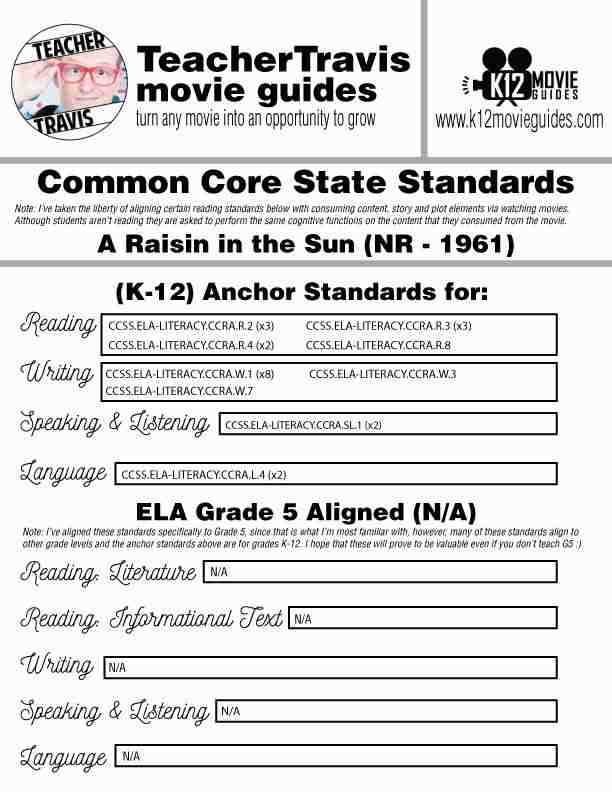
In this section, we delve into the pivotal scenes of the opening portion of Lorraine Hansberry’s iconic play. By examining the characters’ motivations and interactions, we uncover the deeper themes that shape the narrative.
Through a close look at character dynamics and emerging conflicts, we gain insight into the challenges faced by the central family. Their hopes, struggles, and dreams are woven into every conversation, reflecting broader societal issues.
By exploring these initial developments, readers are invited to understand the foundation upon which the rest of the story unfolds. The impact of choices made early on reverberates throughout, highlighting themes of family, ambition, and social change.
Key Themes in Act 1 of A Raisin in the Sun
In the opening scenes of Lorraine Hansberry’s play, various central ideas begin to take shape, setting the stage for the unfolding drama. The characters’ personal ambitions and the conflicts that arise from their differing desires reveal underlying themes that speak to larger societal issues.
One prominent theme is the tension between dreams and reality. As each family member envisions a better future, their visions often collide with the harsh conditions surrounding them, creating emotional and moral dilemmas. These contrasting perspectives highlight the struggle between hope and the constraints of reality.
Another key theme is identity and self-worth. The characters grapple with their roles in society, especially in terms of race and economic status. Their sense of identity is often challenged by societal expectations, and this conflict pushes them to question their value and aspirations.
Generational conflict also emerges as a crucial element. The older and younger characters have differing approaches to achieving their dreams, leading to tension within the family. This generational divide highlights the evolving priorities and values that shape their vision for the future.
Understanding the Main Characters
The characters in this play are multifaceted individuals, each with their own hopes, struggles, and desires. Their interactions provide insight into the broader themes of family, ambition, and societal constraints. The portrayal of these individuals highlights how personal aspirations can be influenced by both internal conflicts and external pressures.
Lena Younger
Lena is the matriarch of the family, a strong, resilient woman with a deep sense of responsibility. Her dreams are rooted in securing a better life for her family, and she carries the weight of their future on her shoulders. Her belief in family unity and the pursuit of happiness shapes many of the decisions made early in the story.
Walter Lee Younger
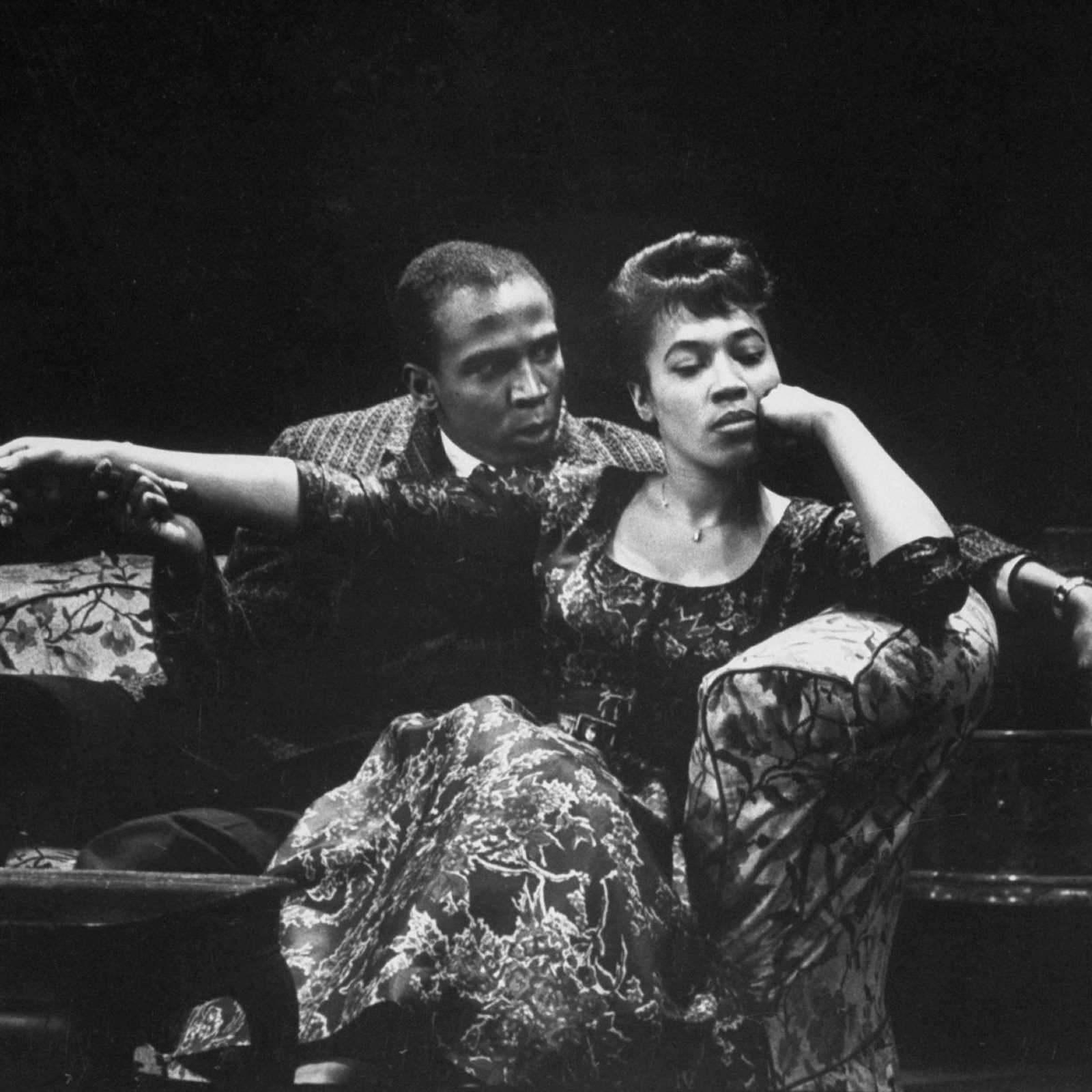
Walter is driven by his desire for financial success and independence. He struggles with his role as a man in a society that limits his opportunities. His ambitious nature often clashes with his family members’ perspectives, but his determination to create a different life for himself and his family remains unwavering.
- Dreams of wealth – Walter’s vision is focused on achieving financial freedom and proving his worth, which leads to conflict with other family members.
- Frustration with his current life – His dissatisfaction with his job and position in society fuels his desire for change.
Ruth Younger
Ruth is pragmatic and hardworking, often balancing the family’s needs while keeping peace. Her role as a mother and wife weighs heavily on her, and her own dreams often take a backseat to the demands of others. Her challenges reflect the tension between personal sacrifice and the desire for a better future.
- Emotional burden – Ruth carries a lot of emotional weight and tries to keep her family together despite their struggles.
- Supportive, but weary – While she supports her family’s dreams, Ruth is also worn down by the constant challenges she faces.
Beneatha Younger
Beneatha is an ambitious young woman who is determined to pursue her career goals, particularly in medicine. Her strong desire to break free from traditional expectations and carve out her own path often puts her at odds with her family’s more conventional values. She represents the generational shift in values and aspirations.
- Defiance of gender roles – Beneatha challenges the societal expectations placed on women, striving to follow her own dreams.
- Quest for identity – Her search for her place in the world goes beyond career goals, exploring cultural and personal identity.
The Role of Dreams in the Play
Throughout the story, aspirations and desires act as driving forces behind the characters’ decisions and actions. Each individual’s vision of a better life influences not only their personal journey but also the relationships within the family. Dreams represent hope, but they also expose the tension between idealism and harsh reality.
Individual Dreams vs. Reality
The characters’ dreams reflect their personal desires, yet they are often shaped by the socio-economic challenges they face. For some, achieving their dreams seems like an escape from poverty, while for others, it’s about gaining independence and recognition in a world that often limits their opportunities.
| Character | Dream | Conflict |
|---|---|---|
| Lena Younger | Providing a better future for her family | Balancing personal desires with the needs of others |
| Walter Lee Younger | Financial success and business ownership | Frustration with his current position and family disagreements |
| Beneatha Younger | Becoming a doctor and defying traditional gender roles | Opposition from family and societal expectations |
| Ruth Younger | Achieving stability and peace for her family | Personal sacrifices and emotional exhaustion |
Shared Dreams and Family Tensions
While dreams may unite the family in their quest for a better life, they also expose the differences in priorities. Each member’s vision clashes at times, creating tension and uncertainty about how to achieve their shared goals. The pursuit of these dreams forces characters to confront both their hopes and fears, shaping their relationships in profound ways.
Setting and Its Significance in Act 1
The environment in which the story takes place plays a crucial role in shaping the characters’ experiences and actions. The physical space reflects the social and emotional constraints faced by the family, influencing their decisions and interactions. The setting is more than just a backdrop; it acts as a symbol of the challenges and aspirations that define the narrative.
The cramped living space of the Younger family represents their limited opportunities and aspirations. The apartment is both a place of comfort and a constant reminder of the barriers they face. The tension between the dream of a better life and the reality of their surroundings is palpable, setting the stage for the conflicts that unfold.
Additionally, the setting highlights the theme of economic struggle and social inequality. The family’s financial struggles are magnified by the small, worn-out apartment they live in. This environment acts as a constant reminder of the socio-economic challenges that hinder the characters from achieving their goals.
The Influence of Family Dynamics
Family interactions and relationships have a profound effect on the direction of each individual’s dreams and actions. The various roles within the family shape how each person perceives their opportunities and their limits. The dynamics between family members create both tension and support, influencing decisions that will impact their collective future.
The constant push and pull between personal desires and family obligations are central to the unfolding narrative. Conflicts emerge as different members pursue their aspirations, sometimes at the cost of others’ dreams. These tensions reflect the complexities of loyalty, sacrifice, and individual ambition within a tight-knit family unit.
Family members’ differing viewpoints on what constitutes success or happiness create a layered environment in which everyone is trying to balance personal growth with maintaining family harmony. Ultimately, the family’s struggles and support for one another highlight the critical role relationships play in shaping personal choices and outcomes.
Conflict and Tension in Act 1
Struggles between characters emerge early in the narrative, as differing dreams, values, and expectations collide. These clashes shape both individual motivations and group dynamics, revealing deep-rooted tensions that affect the decisions each character makes. As conflicts unfold, they expose personal desires, societal limitations, and unresolved emotional issues that hinder the pursuit of a better future.
Family Disagreements
Throughout the first part of the story, the Younger family members experience significant conflict as their differing perspectives on financial security, personal freedom, and family loyalty come to a head. The tension grows as each person becomes more entrenched in their own views, challenging relationships and creating an atmosphere of uncertainty.
External Pressures
In addition to internal family struggles, external forces such as social inequality and economic hardship intensify the tension. These external factors serve as a reminder of the obstacles the characters face in achieving their goals, further escalating the conflict as characters are forced to confront both personal and societal challenges.
| Character | Conflict | Impact |
|---|---|---|
| Lena Younger | Balancing family welfare with her own dreams | Creates tension with her children over priorities |
| Walter Lee Younger | Frustration with his financial situation and family expectations | Leads to clashes with family members, especially his mother |
| Beneatha Younger | Struggling to break from traditional gender roles | Creates conflict with family members who don’t understand her ambitions |
| Ruth Younger | Managing emotional strain from financial instability and family tension | Leads to personal sacrifices and difficult decisions |
The unfolding conflict in this portion of the narrative reveals not only the internal struggles of the characters but also the larger social forces that shape their lives. As tensions rise, each character must navigate their aspirations and responsibilities, which ultimately defines their actions and relationships.
Symbolism of the Raisin in the Sun
The symbol in the title reflects the delayed or unfulfilled aspirations of the characters, representing dreams that are left to wither and fade over time. This image captures the struggle of individuals who face persistent obstacles and systemic limitations, causing their hopes and desires to be pushed aside or deferred. It invites the question of what happens when dreams are denied and whether they can still be achieved.
Deferred Dreams
One of the primary symbols tied to this concept is the idea of delayed hopes. Just as a raisin shrivels and loses its vitality when left in the sun too long, so too can a person’s dreams become diminished and less meaningful when not nurtured or allowed to flourish. This symbol conveys the emotional weight carried by characters who feel trapped by circumstances beyond their control.
Hope for a Better Future
Despite the weight of past disappointments, the symbol also carries the notion of hope and the possibility of revival. The raisin, though dried, still holds a trace of its original form, suggesting that even after experiencing hardships, the potential for renewal remains. This duality speaks to the resilience of the human spirit and the persistent desire to achieve a better life.
The title itself serves as a metaphor for the characters’ internal struggles as they confront the limits placed upon them by society, family, and circumstance. It encapsulates the tension between dreams that have not yet been realized and the relentless hope that keeps them alive, pushing the characters forward in the face of adversity.
The Economic Struggles of the Younger Family
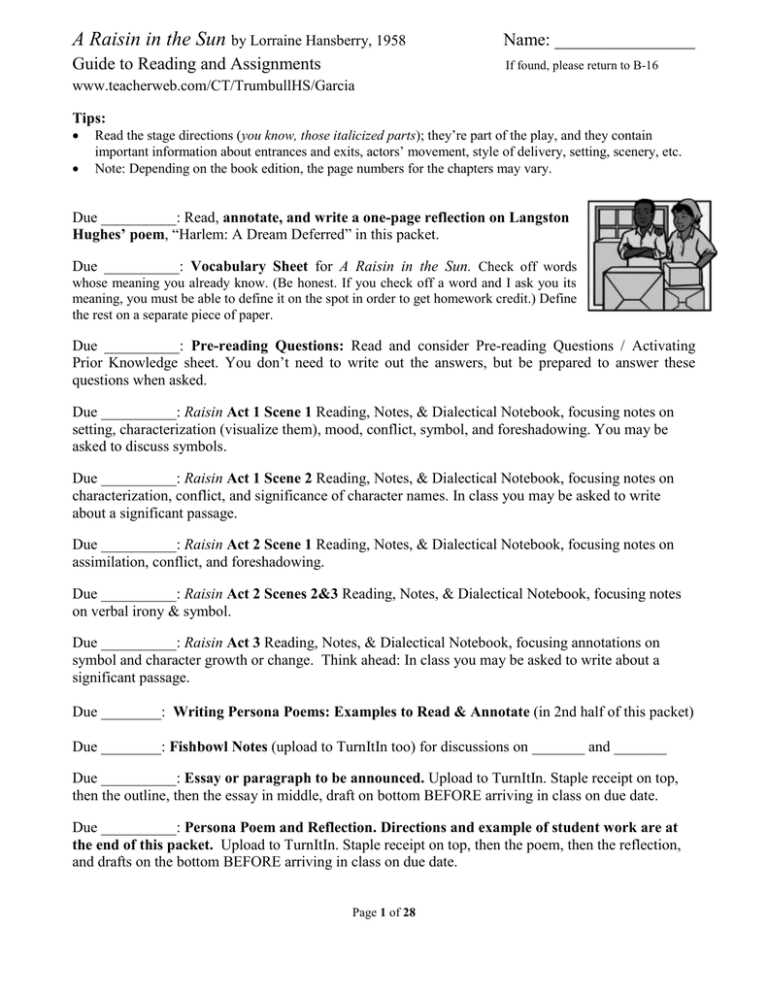
The Younger family faces significant financial difficulties that influence nearly every aspect of their lives. Living in a cramped apartment, the burden of economic hardship permeates their relationships, aspirations, and everyday decisions. These struggles reflect the larger societal issues of poverty, inequality, and limited opportunities that they must navigate, often leading to tensions between family members as they seek a way out of their dire situation.
Poverty and Limited Resources
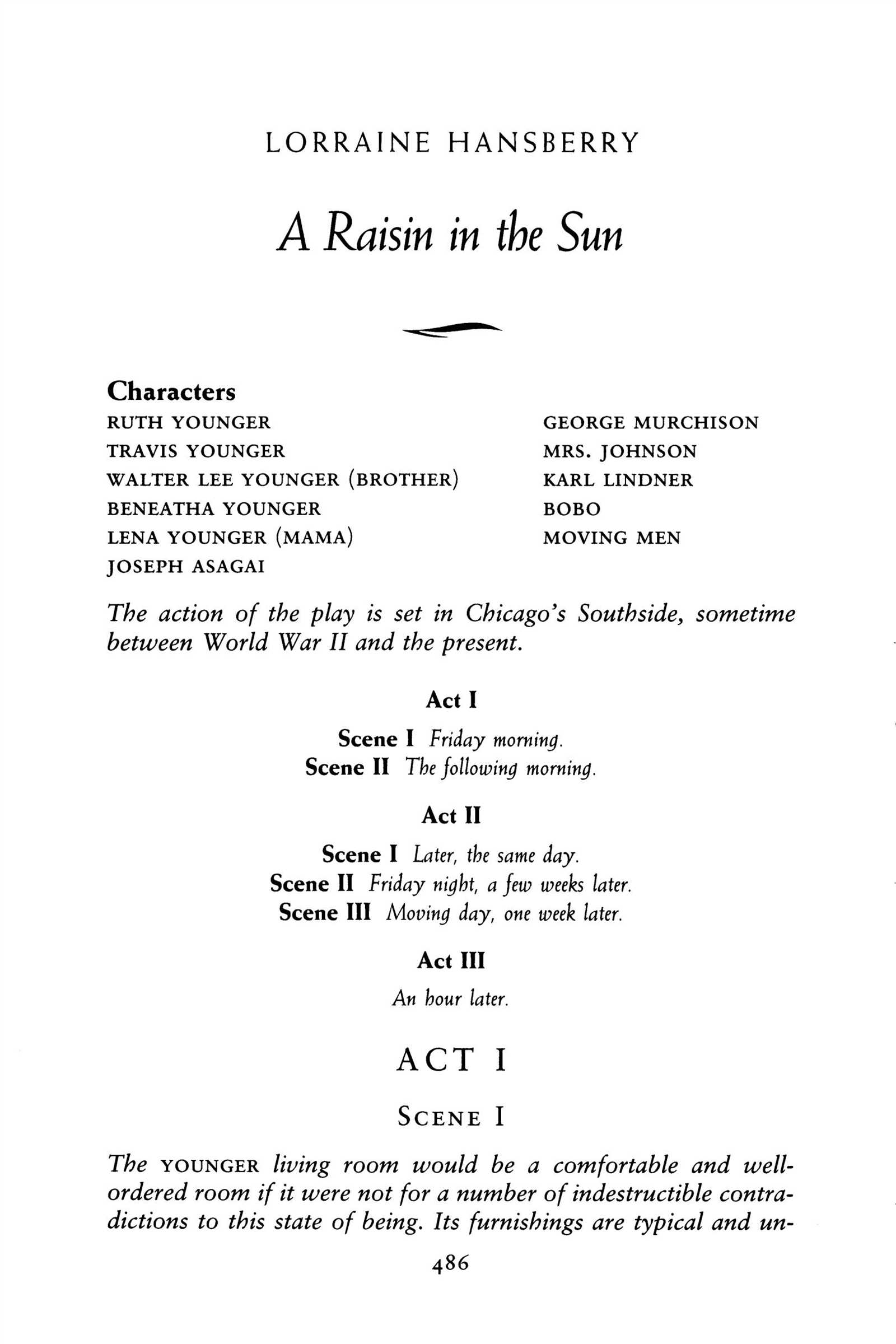
The Younger family’s financial instability is highlighted by their inability to afford basic necessities and a lack of resources for pursuing dreams. The small apartment in which they live symbolizes their constrained economic mobility. Their hopes for a better life are dependent on the arrival of an insurance check, which they plan to use to improve their living conditions, yet even with this windfall, they must contend with deep-seated challenges surrounding poverty.
Impact on Family Dynamics
The economic strain causes stress and conflict within the family. Each member, from Walter to Beneatha, has different ideas on how the money should be spent, with each decision becoming a battleground for their hopes and dreams. This ongoing struggle exacerbates the family’s tensions, as they all desire financial freedom and a chance to break free from the cycle of poverty that has defined their lives. The lack of money often leads to frustration and compromises the family’s ability to work together toward a common goal.
Through their financial hardships, the Younger family reflects the experience of many people facing economic challenges, showing the deep emotional and psychological toll that poverty can take on individuals and families. These struggles are central to understanding the character dynamics and the larger themes of the play.
How Act 1 Introduces Social Issues
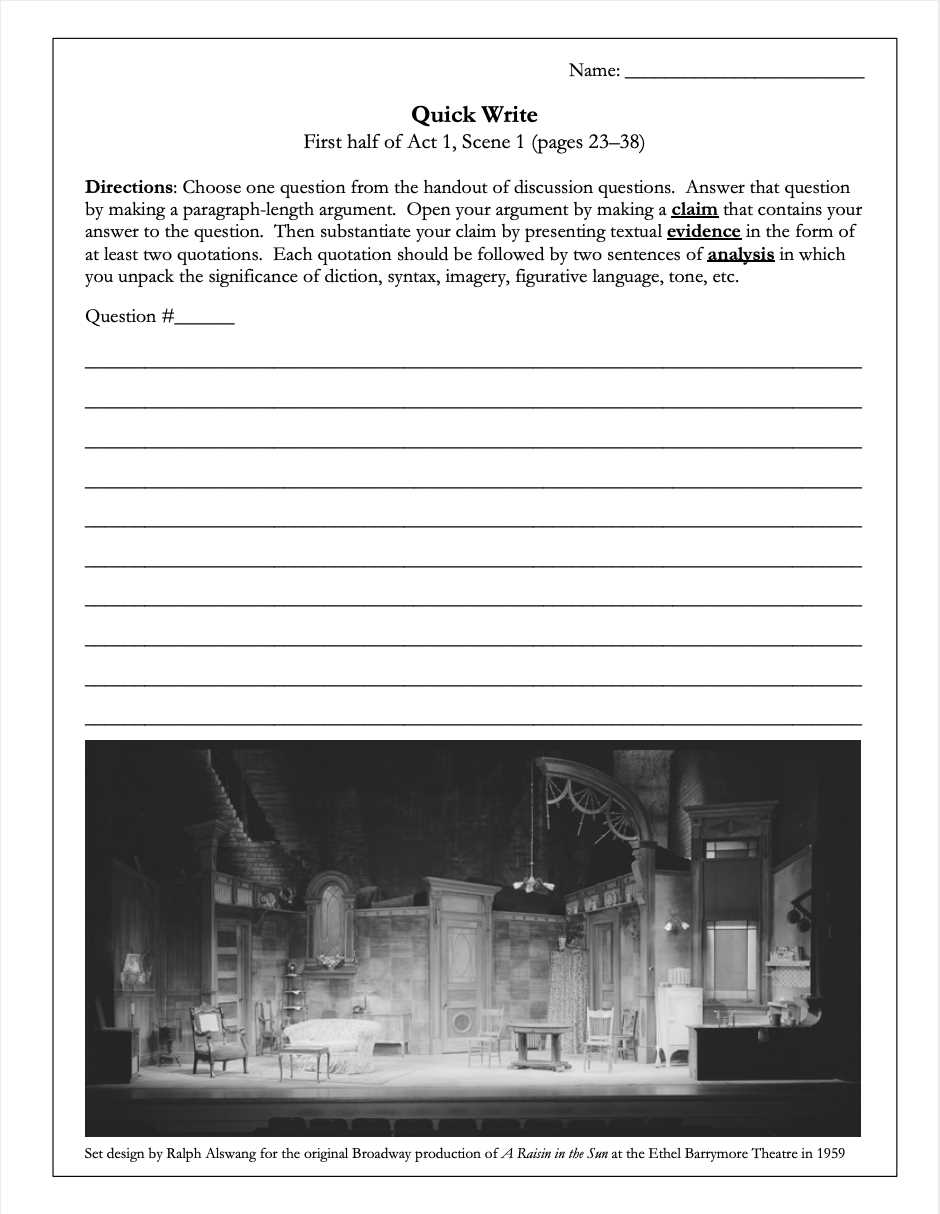
The first section of the play sets the stage for a deep exploration of social challenges that impact the lives of the family. Through the dialogue and the characters’ actions, important themes like racial inequality, economic struggles, and generational conflict emerge. These issues are not presented abstractly but through the personal experiences and dreams of each character, making them relatable and poignant. The play exposes how these challenges shape their aspirations and relationships, setting the tone for the unfolding drama.
Economic Inequality
The family’s financial struggles are a central theme that underlines many of the tensions in their interactions. The lack of money affects not only their material conditions but also their sense of self-worth and the possibility of achieving their dreams. The arrival of the insurance check becomes a focal point for the characters’ hopes for upward mobility, but also exposes the limitations imposed by their social position.
Racial Discrimination
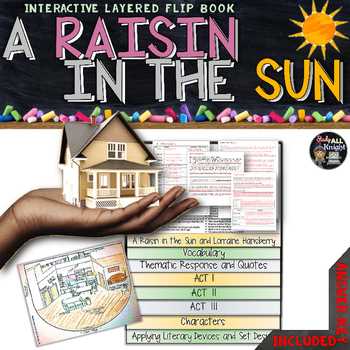
Race and its impact on opportunities are also introduced early on, as the family navigates societal barriers shaped by racism. Beneatha’s aspirations of becoming a doctor are hindered by the perception that she cannot succeed due to her race, while Walter faces discrimination in his pursuit of business opportunities. These obstacles reflect the broader societal constraints that limit personal advancement based on racial identity.
- Access to Opportunity: The characters confront limited options due to their race and economic status.
- Generational Tensions: Different generations within the family have varying perspectives on how to confront these social issues.
- Resistance to Change: Some family members resist change, clinging to traditional roles despite the evolving societal landscape.
By presenting these challenges early, the play draws attention to the social inequities that continue to shape the characters’ lives, offering a critical commentary on the broader societal issues of the time.
Character Development in Act 1
The initial part of the play introduces characters who are shaped by their unique circumstances and individual desires. Through dialogue and interaction, their personalities begin to emerge, revealing deeper layers of ambition, frustration, and hope. The challenges each character faces push them to grow and evolve, laying the groundwork for the conflict that unfolds throughout the story.
As the characters respond to their environment, their motivations become clearer, with each of them navigating personal aspirations while dealing with societal constraints. These early developments highlight the diverse ways in which the individuals react to their shared circumstances, setting the stage for future tensions and growth.
Walter Younger
Walter is introduced as a man who is deeply dissatisfied with his current life and sees financial success as the key to achieving his dreams. His desire for independence and wealth drives much of his behavior, but it also causes him to clash with other family members. His character is marked by ambition and frustration, as he struggles to find a way out of his economic situation.
Beneatha Younger
Beneatha’s development in this section reveals her intellectual aspirations and desire for self-discovery. She challenges traditional roles, especially regarding her future as a doctor and her rejection of societal expectations placed on women. Beneatha’s character embodies a sense of optimism and defiance as she fights for her place in a world that offers limited opportunities for women of color.
Through these early character developments, the play presents a complex portrait of individuals whose dreams and struggles will continue to shape their paths. The dynamics between them provide both emotional depth and insight into broader social themes that resonate throughout the entire story.
Racial Identity and Its Impact
Throughout the early moments of the play, racial identity becomes a central theme that influences the characters’ interactions, dreams, and struggles. The ways in which each character perceives themselves and is perceived by others deeply affect their choices and perspectives. The social barriers tied to race shape their opportunities and determine much of the conflict they experience.
The characters’ lives are framed within a society that enforces racial segregation and inequality, causing them to navigate obstacles that stem not just from personal ambition but from societal prejudice. This impact is felt most acutely in their day-to-day existence, as their aspirations are hindered by factors beyond their control. These racial tensions are evident in both overt and subtle ways, setting the stage for complex emotional dynamics as the play progresses.
Walter Younger’s Struggle
For Walter, racial identity affects his sense of worth and success. He feels trapped in a cycle of poverty that he believes is perpetuated by racial inequality. His desire to provide a better life for his family is rooted in his need to overcome these societal limits, seeking financial success as a way to assert his value in a world that often devalues him because of his race. Walter’s identity is intricately tied to his sense of manhood and his belief that success will free him from the limitations imposed by his racial background.
Beneatha Younger’s Rejection of Conformity
Beneatha, on the other hand, challenges societal norms not only due to gender but also due to race. Her desire to become a doctor and her rejection of traditional roles show her desire to redefine what it means to be a woman of color in a world that insists on limiting opportunities for those like her. Beneatha’s struggle is less about achieving success through wealth and more about asserting her intellectual identity, regardless of the expectations placed on her because of her race.
Racial identity, then, serves as a powerful force that drives the characters’ internal conflicts and aspirations, shaping their interactions with each other and with the world around them. It becomes a lens through which their personal struggles and dreams are filtered, highlighting the intersection of race, ambition, and social mobility.
Exploring the Theme of Hope
Hope serves as a driving force for many of the characters, propelling them toward their goals and shaping their decisions. It is an essential element that keeps them striving for a better future despite the obstacles they face. Throughout the narrative, hope is both a source of inspiration and tension, reflecting the complex nature of pursuing one’s dreams within a harsh social and economic environment.
The characters’ individual hopes are often tied to their personal dreams, representing a desire for change and improvement. This theme underscores the disparity between the dreams they hold and the harsh realities they encounter. The persistence of hope, even in the face of adversity, provides a window into their resilience and determination to break free from their circumstances.
Key Aspects of Hope in the Play
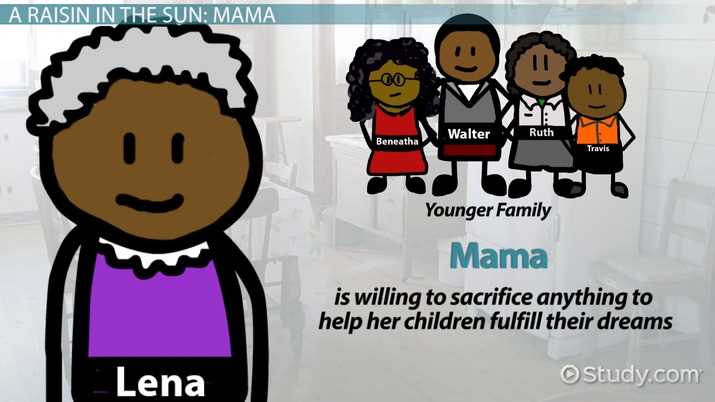
- Personal Aspirations: Each character holds onto their dreams as a form of resistance to their current situation. Whether it’s a desire for financial stability, personal success, or fulfilling a deep-seated ambition, hope manifests as a lifeline.
- Generational Hope: Hope is not just individual but collective, reflecting a broader dream of progress for future generations. This is evident in the way older characters like Lena Younger envision a better life for their children, believing that their sacrifices will lead to better opportunities for them.
- Hope in the Face of Setbacks: Even though obstacles threaten to diminish their hopes, the characters remain resilient. Hope becomes a means of survival, allowing them to push through moments of disappointment and uncertainty.
Hope, therefore, is not a static element; it evolves with the characters’ experiences. While it offers them the strength to move forward, it also creates emotional tension, as the characters must confront whether their dreams will come to fruition or remain out of reach. In this way, hope plays a central role in shaping the narrative, acting as both a motivating force and a source of conflict.
The Importance of the Insurance Check
The insurance payment serves as a pivotal moment in the story, symbolizing both hope and tension within the family. It represents a significant financial opportunity that could alter the course of their lives. However, it also acts as a source of conflict, as each family member has differing views on how the money should be used. This central element highlights issues such as financial stability, individual desires, and the complex dynamics between family members.
For some characters, the check represents a chance to escape from the limitations of their current lifestyle. For others, it becomes a way to invest in long-term goals, such as education, property, or a business. The choices surrounding the check reflect not only personal aspirations but also the broader theme of upward mobility and the desire for a better future. These differing perspectives create tension within the family, as each individual’s vision for their future conflicts with that of others.
Key Roles of the Insurance Check
- Financial Liberation: For certain characters, the check offers a way to break free from economic hardship, symbolizing the potential for a new beginning and the possibility of realizing their dreams.
- Conflict and Disagreement: The allocation of the check’s funds brings out deep-seated family tensions, as conflicting priorities emerge. The disagreement over how to spend the money highlights the generational and ideological divides within the family.
- Dreams Deferred: The money also serves as a reminder of the difficulties of achieving one’s dreams. Even though it offers a potential solution, it cannot fully address the systemic issues that hinder personal success.
Ultimately, the insurance check is more than just a monetary gift; it is a symbol of both opportunity and struggle. It represents the hopes of individuals within the family, while also emphasizing the challenges they face in making those dreams a reality. The decisions made about the check will have lasting impacts, shaping the family’s future and revealing the complex layers of their desires and frustrations.
What Act 1 Reveals About Gender Roles
The first part of the story provides valuable insights into how gender expectations influence the lives of the characters. It shows the limitations placed on individuals based on societal norms related to masculinity and femininity. Through the interactions and experiences of various characters, we see how these roles shape their aspirations, relationships, and choices. Gender plays a crucial role in the dynamics of the family, impacting both the opportunities available to the characters and their struggles to assert their autonomy.
Traditional Expectations of Women
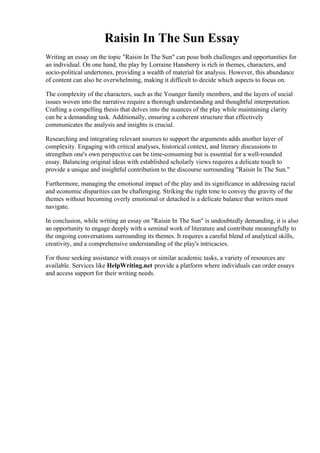
In this narrative, the female characters are expected to fulfill domestic roles, often at the expense of their personal dreams. These expectations place a significant burden on women, who are tasked with balancing family responsibilities and their own desires. For instance, one character is portrayed as having to make sacrifices for the sake of others, particularly within the home. This reinforces traditional gender norms where women are often expected to put their aspirations on hold in order to serve the needs of the family.
Male Dominance and Authority
On the other hand, male characters are presented with more opportunities to assert control and make decisions, often without the same level of scrutiny or compromise that women face. Their authority within the family structure reflects larger societal patterns where men typically hold positions of power. However, this dynamic also leads to tension, as certain male figures struggle to meet their own expectations or feel pressured by their roles. The conflict arising from this imbalance is central to the underlying themes of the story.
Ultimately, the portrayal of gender roles in the opening scenes highlights how deeply ingrained social norms shape the experiences of individuals. These roles not only define the expectations placed on characters but also serve as a source of tension and personal conflict as they navigate their desires within a rigid social structure.
Lessons on Sacrifice and Responsibility
The story emphasizes the weight of sacrifice and the importance of responsibility within a family structure. It illustrates how characters navigate their own personal desires versus the needs of those they care about. The tension that arises from these conflicting desires showcases the emotional and moral dilemmas that come with fulfilling one’s duties to others. Throughout the narrative, these lessons reveal the complexities of decision-making and the impact of personal choices on the well-being of the collective.
The Cost of Sacrifice
At the heart of the story is the notion that sacrifice often comes with emotional, financial, or personal costs. Key figures are seen making difficult choices that prioritize the well-being of their loved ones, even if it means putting their own dreams on hold. The story examines the toll that constant selflessness can take, both mentally and physically. For example, the characters’ attempts to improve their living situation often require them to forgo personal desires in favor of the larger family goals.
Responsibility Toward Others
The idea of responsibility is explored through the characters’ commitment to supporting each other. It becomes clear that each individual feels a deep sense of duty toward their family, even when it means sacrificing personal happiness or success. This sense of obligation not only shapes the actions of each character but also creates a framework for understanding how relationships are influenced by shared responsibilities. Some characters struggle with these duties, while others embrace them wholeheartedly, highlighting the diverse approaches to family care and support.
- Personal goals versus family needs
- Emotional cost of sacrificing one’s dreams
- The moral implications of prioritizing others
- The burden of responsibility within a family
In the end, the lessons on sacrifice and responsibility challenge the characters to confront their values and decide what is truly worth the cost. These themes resonate deeply with the struggles individuals face when balancing personal aspirations with obligations to those around them.
Previewing Future Conflicts in the Play
Throughout the first part of the story, several tensions begin to take shape, hinting at the conflicts that will unfold as the narrative progresses. These early indications highlight the internal and external struggles the characters face as they pursue their personal dreams, grapple with societal pressures, and contend with their collective hopes. The groundwork laid in these initial moments sets the stage for deeper disputes that explore issues of identity, family dynamics, and aspirations.
Emerging Family Divisions
One of the central issues that foreshadows future conflict is the division within the family regarding the use of a significant financial windfall. While some members view the money as an opportunity to secure a better future, others see it as a way to fulfill personal desires. This disagreement over priorities signals the strain between different generational values and visions for a better life. As the play unfolds, this division is likely to deepen, sparking emotional confrontations.
Socioeconomic Tensions and Racial Barriers
Another looming conflict is tied to the socioeconomic struggles and racial tensions faced by the characters. These challenges are particularly evident in the aspirations of the younger family members, who hope for upward mobility in a society that may not fully accept them. The pursuit of a better life will inevitably clash with the realities of racial discrimination, leading to confrontations that question the fairness of society and the limits of personal achievement. This overarching conflict between hope and reality is set to intensify as the characters’ desires clash with the harsh conditions they encounter.
- Financial disagreements creating family rifts
- Conflicting views on the role of personal dreams versus family obligations
- Racial discrimination as a barrier to progress
- Generational tensions regarding social mobility and future aspirations
These early glimpses into the play’s future conflicts suggest that the characters will have to navigate a complex web of family loyalty, personal ambition, and societal limitations. As the story progresses, these tensions will evolve into more intense struggles that will ultimately shape the characters’ journeys and decisions.